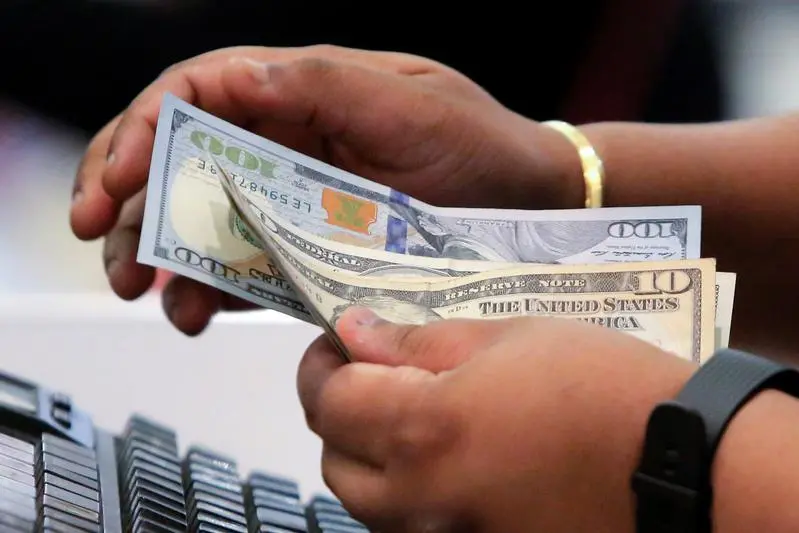PHOTO
WASHINGTON - U.S. consumer prices rose moderately in April and underlying inflation remained muted, supporting the Federal Reserve’s projection of no further interest rates increases this year.
The persistently benign inflation reported by the Labor Department on Friday could, however, ratchet up White House pressure on the U.S. central bank to cut rates. President Donald Trump has repeatedly criticized the Fed for tightening monetary policy, arguing that inflation was low.
Trump has claimed the economy could go “up like a rocket if we did some lowering of rates, like one point.” On Friday, Trump tweeted, “Great Consumer Price Index just out. Really good, very low inflation! We have a great chance to ‘really rock!’ Good numbers all around.”
The Fed last week kept interest rates unchanged and signaled little desire to adjust monetary policy anytime soon. Fed Chairman Jerome Powell said he believed the weak inflation readings “may wind up being transient.”
With rents and healthcare costs increasing solidly in April, economists agreed temporary factors were restraining inflation and expected a pickup, especially after the Trump administration on Friday raised tariffs on $200 billion worth of Chinese goods to 25% from 10%.
“If one were worried ... then help may be on the way, in the form of higher tariffs being passed through to a store near you,” said Michael Feroli, an economist at JPMorgan in New York. “In sum we believe the Fed will remain comfortable with their ‘on hold’ posture for the foreseeable future.”
The Consumer Price Index increased 0.3% last month, lifted by rising gasoline, rents and healthcare costs. The CPI gained 0.4% in March. It rose 2.0% in the 12 months through April after advancing 1.9% in March. Economists had forecast the CPI increasing 0.4% in April and rising 2.1% year-on-year.
Excluding the volatile food and energy components, the CPI edged up 0.1% as apparel prices dropped for a second straight month and the cost of used motor vehicles and trucks declined further. The so-called core CPI has now increased by the same margin for three straight months. In the 12 months through April, the core CPI increased 2.1% after gaining 2.0% in March.
The Fed, which has a 2% inflation target, tracks a different measure, the core personal consumption expenditures (PCE) price index, for monetary policy. The core PCE price index increased 1.6% on a year-on-year basis in March, the smallest rise in 14 months, after advancing 1.7% in February. The April PCE price index data will be published later this month.
Economists said rising healthcare costs, which were also evident in April’s producer price report that was published on Thursday, suggested the core PCE price index probably increased 1.7% year-on-year in April. They saw little chance of the Fed cutting interest rates this year.
NO “INSURANCE CUTS”
“We would fade any inference that the Fed may be nudged toward ‘insurance cuts’ due to weak inflation,” said Michael Hanson, head of global macro strategy at TD Securities in New York. “Rather, we would need to see a run of multiple months with core PCE inflation around 1.5% in order for the Fed to start that conversation.”
Inflation remains tame as increased worker productivity keeps labor costs contained, despite a tightening job market.
Gasoline prices rose 5.7% in April, accounting for more than two-thirds of the increase in the CPI last month, after surging 6.5% in March. Food prices fell for the first time in nearly two years, with food consumed at home dropping by the most since March 2016.
But consumers paid more for rent and healthcare. Owners’ equivalent rent of primary residence, which is what a homeowner would pay to rent or receive from renting a home, increased 0.3% last month after rising by the same margin in March.
Healthcare costs increased 0.3%, matching March’s gain. There were increases in the cost of prescription medication and doctor visits. But the cost of hospital services fell 0.5%.
Apparel prices declined 0.8% last month. They plunged 1.9% in March, which was the biggest drop since January 1949, after the government introduced a new method and data to calculate apparel prices.
Prices for used motor vehicles and trucks fell 1.3%, decreasing for a third straight month. The cost of new vehicles rose marginally. There were also declines in the cost of airline fares, alcoholic beverages and tobacco.
Prices for household furnishings fell for the first time in 10 months. The cost of these goods had been boosted by tariffs.
Economists said the latest round of duties on Chinese imports put an upward risk on inflation.
“The extent to which that will feed into consumer inflation will depend in part on how long the tariffs are in place,” said Sarah House, a senior economist at Wells Fargo Securities in Charlotte, North Carolina.
Reporting by Lucia Mutikani, Editing by Andrea Ricci
Our Standards:The Thomson Reuters Trust Principles.
© Reuters News 2019























